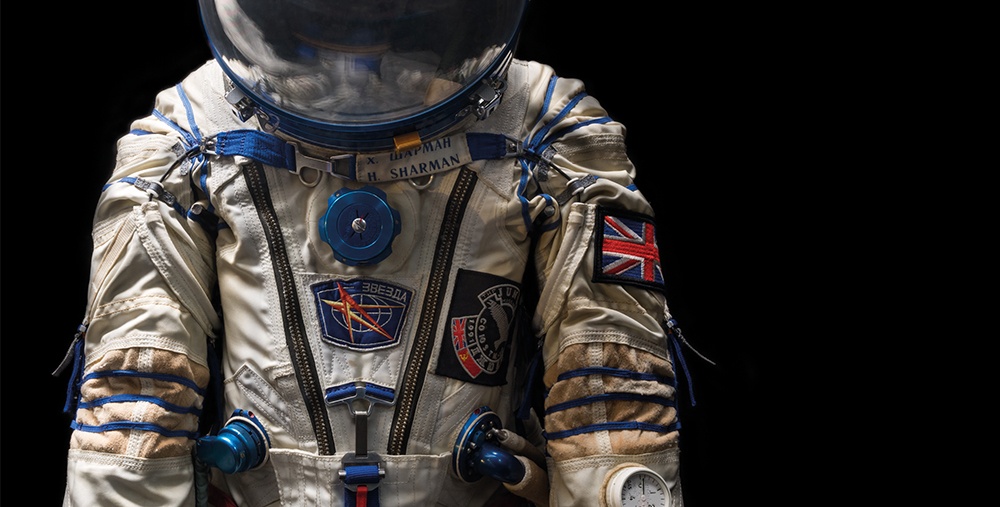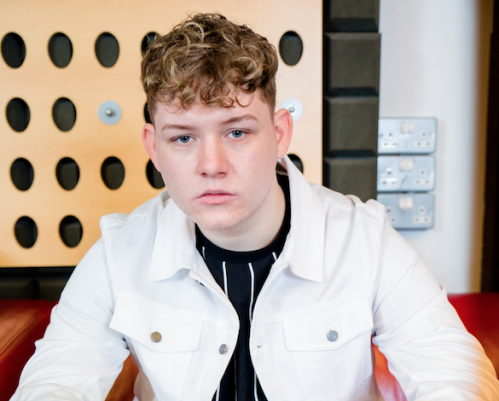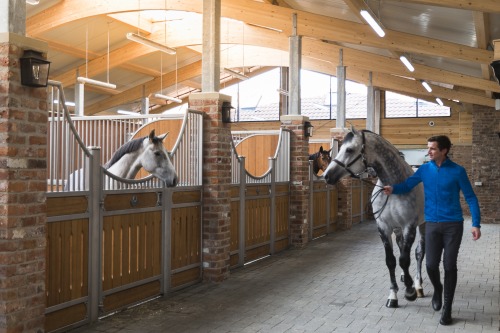Helen Sharman: Britain's First Astronaut

Among the many achievements of God’s own country is one that’s out of this world: Sheffield’s own Helen Sharman was Britain’s first astronaut
Children of the world with dreams of going into space, listen up: the first step to becoming an astronaut is to turn on your car radio. One evening in the 1980s, Helen Sharman, then working at confectionery company Mars (yet another dream job) was driving home from work and flicking through the stations on her car radio. ‘Instead of music, I caught an advert promoting this opportunity that had suddenly arisen for somebody from this country to apply to be an astronaut,’ she recalls. Helen was intrigued.
Growing up in the 1960s in Sheffield, Helen had an ordinary life. ‘I did normal things,’ she says. ‘I had a normal childhood; a normal family; a normal school life.’ Among the most ‘shocking’ moments in her upbringing was a big family move – from the north of Sheffield to the south. She had enjoyed science and languages at school, but decided on the former to keep her options open in the future. But those options didn’t include space. ‘Back when I was growing up, nobody expected to go into space,’ Helen explains. ‘The Americans and the Russians did that; we didn’t.’
Yet thanks to a confluence of many different and disparate events, including the fall of the Berlin Wall, the need for Russia to sell spaces on its Soyuz spacecraft to third countries and Helen just happening to flick the station on her car radio that one night after work, Helen Sharman, the chemistry buff from Sheffield, became Britain’s first person in space, decades before Tim Peake. But first, she had to undergo a battery of tests.
As you’d expect, Helen wasn’t the only person to hear the advert, nor was she the only person intrigued by the idea of following in the footsteps of Russian cosmonauts and NASA astronauts. In all, 13,000 people initially responded to the advert, though they were quickly whittled down to 250 candidates invited to undergo initial medical tests. Because Britain hadn’t previously had a space agency, and because... well, we’re British, the test involved a basic psychometric test and a routine medical, carried out by a Bupa doctor.
Helen managed to make the cut of 250, and the next round of 16 hopefuls who were taken to the Institution of Aviation Medicine at Farnborough airfield in Hampshire. There the tests became more specialised and spacey: centrifuges, testing how astronauts could cope with G-forces, and motion sickness tests where you were swung around in chairs, factored highly. For some it’d be a tough, painful, physical exertion. For Helen it was a bit of fun. ‘Because I never expected to be chosen, I went into it with an open mind and enjoyed it, finding out everything I could about it,’ she recalls.
Helen’s run of luck (and by now, perhaps a good bit of skill) continued. From the 16 who went to Farnborough, she was one of four who went to Moscow for psychological tests and training with Russian cosmonauts. ‘It was a drawn out process, but in a way it was very quick,’ she says. ‘I heard the advert in June 1989, and in November I began my training in Star City.’
Closed Military Townlet No 1, better known as Star City, had been home to the Yuri Gagarin Cosmonaut Training Centre since Helen was a child. Russia’s finest cosmonauts came through its gates and ended up going into space, and suddenly Helen was among them. ‘The biggest, hardest part of the whole thing was the culture shock,’ she recounts: ‘Going from Britain to the Iron Curtain-era Soviet Union. I had to learn to speak Russian, was learning the culture, and was living on a military base.’
The differences were put into sharp focus when Helen perused the shops at Star City, whose shelves were empty. ‘You’d see a pile of cabbages on the side of the road one day: there’d be a huge queue, and then there’d be no more cabbages for two more weeks,’ she says. ‘It was incredibly difficult for most people living there. I was very lucky: I had access to a canteen where you’d expect to get your evening meals, which by Russian standards was very good quality food.’ She also had – by dint of the fact she possessed a credit card in a country where the technology had not yet been rolled out to the general populace – access to an exclusive Finnish shop in the centre of Moscow with plenty of food. Helen would go to the shop and buy the rare bananas that could be found in the country at the time, and bring them back to Star City to share with her colleagues. She was also popular because the shop stocked beer: every month, she and her British colleague, and their Austrian, Japanese and German counterparts would host a party for them and their Russian counterparts. The Brits would get the beers in.
Not everything was easy, though: Helen was unable to ring home easily, and had to book international calls with an operator on the military base three or four days in advance. ‘On the day it was scheduled, I’d rush home from my training,’ she says. The call could come in any time between 5pm and 9pm – but Helen’s training didn’t end until 6pm. If the phone call
came in before she got home, she’d have to call up the operator again and rearrange for another three days’ time.
The days at Star City were filled with training in ballistics, flight, electronics and space systems. She spent hours in a simulator, and on planes which flew in parabolic arcs to simulate the feeling of weightlessness. It was all preparation for flying on the Soyuz TM-12 mission, which took off on 18th May 1991. By then, Helen had undergone 18 months training in Russia, and was, at the age of 27, about to do something that no Britain and precious few people had ever done before.
As she underwent the barrage of press conferences and preparation ahead of the launch, Helen just wanted to do one thing: get on board the rocket. Once there, the preparations went ahead as scheduled, and the rocket launched 28 seconds after 12.50pm. ‘It was windy on the day of the launch,’ Helen remembers. ‘It felt as if we were swaying in the wind a bit before we took off.’ But once the thrusters kicked in, the G-forces exerted on the rocket and cosmonauts inside it rose to 2.5, before dropping down to half a G as the second stage rocket was expelled. Then the third stage took over, bringing the rocket up to 3.5G. Helen was in space: her surroundings for eight days.
Most astronauts struggle to sum up what it’s like to be confronted by the vastness of our planet appearing tiny beneath them, but Helen is effusive about her thoughts seeing the world laid out beneath her.
‘We often like looking at flames flickering or water moving down a stream because we like moving things,’ she says. ‘Looking at the earth as it spins below us is incredible. We went all the way around the earth in 92 minutes. You see the whole of western Europe in five minutes or so. But then you look at it the other way and see the stars. It’s just amazing: millions of stars.
‘In some respects you feel both small and large,’ she continues. ‘When you look at the stars, that infinite, mass complexity of planets – stuff we know about but also stuff we don’t know about – that makes me feel small, not only in terms of physical size, but what we know. When you look at it from space and see our world is a tiny little part of the vast universe, you do feel small. But equally, when I thought about the kind of things I knew lots about, the fact that we can go over western Europe in five minutes and yet the rest of Africa took 20 minutes, or the Pacific Ocean took 40 minutes, that did catch me and made me realise how large the planet is.’
It’s something that can catch out the few people who get to experience the sights of space, and can cause them to struggle to readjust. But for Helen – who is now the Departmental Operations Manager at Imperial College London’s Department of Chemistry – the bigger challenge was the physical readjustment she made when she landed. ‘Getting used to having weight again was weird,’ she says. ‘Every time I lifted a finger, it felt heavy. It took a while for that weight not to be noticed anymore by my brain.’
She’s glad that her spacesuit – a talisman of her time in space, and Britain’s space-age achievements – are making their way outside London. ‘I know how London-centric things are. I was so delighted my spacesuit was in the London Science Museum,’ she says, ‘but I’m equally delighted it can go on a little trip of its own.’
It follows her own journeys up and down the country. She still has family in Yorkshire, and visits regularly. ‘I love Yorkshire,’ she says. ‘I spent some time walking in the Dales last year. I love the countryside and getting out and about. I like the fact that we’ve got this beautiful countryside right next door to some amazing cities with all the culture that offers. I love the fact that people are practical in Yorkshire; that they’re down to earth.’ There’s a brief pause. ‘Oh, down to earth. That’s a bad pun, isn’t it?’
Helen will also be appearing at the Leeds International Festival, which runs from 28th April – 12th May.
Helen’s spacesuit will be displayed at the Great North Museum Hancock, Newcastle, as part of The Great Exhibition of the North from 22nd June–9th September. For more information, visit www.getnorth2018.com







